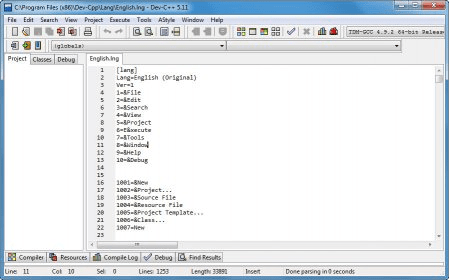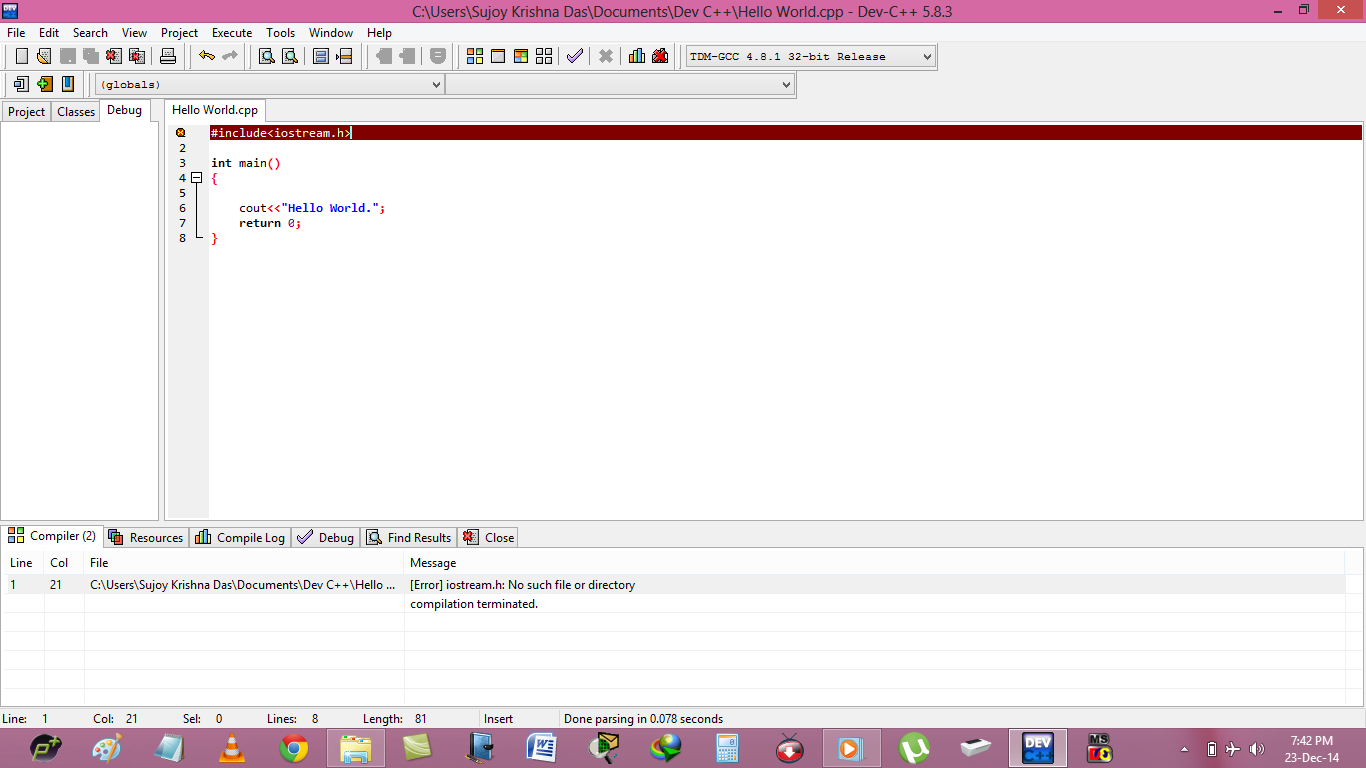Header Files For Dev C++
- C Programming Tutorial
- C Programming useful Resources
Mar 22, 2014 File Header pada C. Bahasa pemrograman memiliki cara yang tersendiri untuk mendapatkan akses memori. Dalam bahasa C maupun C membutuhkan suatu file yang digunakan untuk mengakses hal tersebut yaitu File Header. File Header adalah file yang berisi deklarasi untuk berbagai fungsi yang dibutuhkan oleh program baik itu sebagai standar Input.
- Mar 30, 2013 Easy Programming - Beginner C Tutorial - Using Header Files (.h Files) (26) - Duration: 5:48. Nazmus Nasir 35,619 views.
- C code files (with a.cpp extension) are not the only files commonly seen in C programs. The other type of file is called a header file. Header files usually have a.h extension, but you will occasionally see them with a.hpp extension or no extension at all. The primary purpose of a header file is to propagate declarations to code files.
- Selected Reading
A header file is a file with extension .h which contains C function declarations and macro definitions to be shared between several source files. There are two types of header files: the files that the programmer writes and the files that comes with your compiler.
You request to use a header file in your program by including it with the C preprocessing directive #include, like you have seen inclusion of stdio.h header file, which comes along with your compiler.

Including a header file is equal to copying the content of the header file but we do not do it because it will be error-prone and it is not a good idea to copy the content of a header file in the source files, especially if we have multiple source files in a program.
A simple practice in C or C++ programs is that we keep all the constants, macros, system wide global variables, and function prototypes in the header files and include that header file wherever it is required.
Include Syntax
Both the user and the system header files are included using the preprocessing directive #include. It has the following two forms −
This form is used for system header files. It searches for a file named 'file' in a standard list of system directories. You can prepend directories to this list with the -I option while compiling your source code.
This form is used for header files of your own program. It searches for a file named 'file' in the directory containing the current file. You can prepend directories to this list with the -I option while compiling your source code.
Include Operation

The #include directive works by directing the C preprocessor to scan the specified file as input before continuing with the rest of the current source file. The output from the preprocessor contains the output already generated, followed by the output resulting from the included file, followed by the output that comes from the text after the #include directive. For example, if you have a header file header.h as follows −
and a main program called program.c that uses the header file, like this −
the compiler will see the same token stream as it would if program.c read.
Once-Only Headers
If a header file happens to be included twice, the compiler will process its contents twice and it will result in an error. The standard way to prevent this is to enclose the entire real contents of the file in a conditional, like this −
This construct is commonly known as a wrapper #ifndef. When the header is included again, the conditional will be false, because HEADER_FILE is defined. The preprocessor will skip over the entire contents of the file, and the compiler will not see it twice.
Computed Includes
Sometimes it is necessary to select one of the several different header files to be included into your program. For instance, they might specify configuration parameters to be used on different sorts of operating systems. You could do this with a series of conditionals as follows −
But as it grows, it becomes tedious, instead the preprocessor offers the ability to use a macro for the header name. This is called a computed include. Instead of writing a header name as the direct argument of #include, you simply put a macro name there −
SYSTEM_H will be expanded, and the preprocessor will look for system_1.h as if the #include had been written that way originally. SYSTEM_H could be defined by your Makefile with a -D option.
| g++ main.cpp file.c file.h Only main.cpp and file.cpp will be compiled. A side effect of this is that header extensions are arbitrary. |
I wasn't sure that was the case. iirc, you could compile headers in VS. I haven't tried it since i switched to CodeBlocks+GCC. But that's a valid point.

| About section 7 |
Oh crap! That's what i get for not testing enough. You're totally right, forward declaring works fine. Only problem happens if its implicitly inlined, but that's another matter.
| Finally, about templates, I'd say it's better practice to put the template definition in the class declaration. |
Well -- I'm not a big fan of putting implementation in the class itself (unless it's a really small get() function or some other kind of 1-liner). I guess with templates it's alright because any dependencies can be forward declared and included after the class body (at least I think so, I'd have to actually test that).
There are other considerations, too, though. Like if the template class is exceedingly large and you want to ease compile time (though it would have to be pretty freaking big to make a difference)
Anyway overall I agree. I just included that bit out of completeness. I figured I should focus more on the instantiating method since everybody knows how to do the inlining method. But really -- the more I think about it, the more I think that should belong in another article (like one specifically talking about templates).